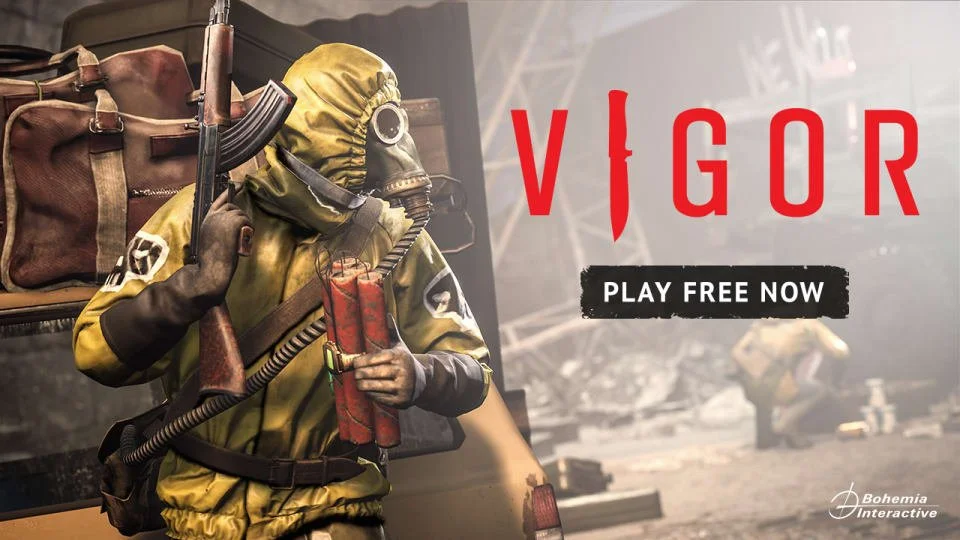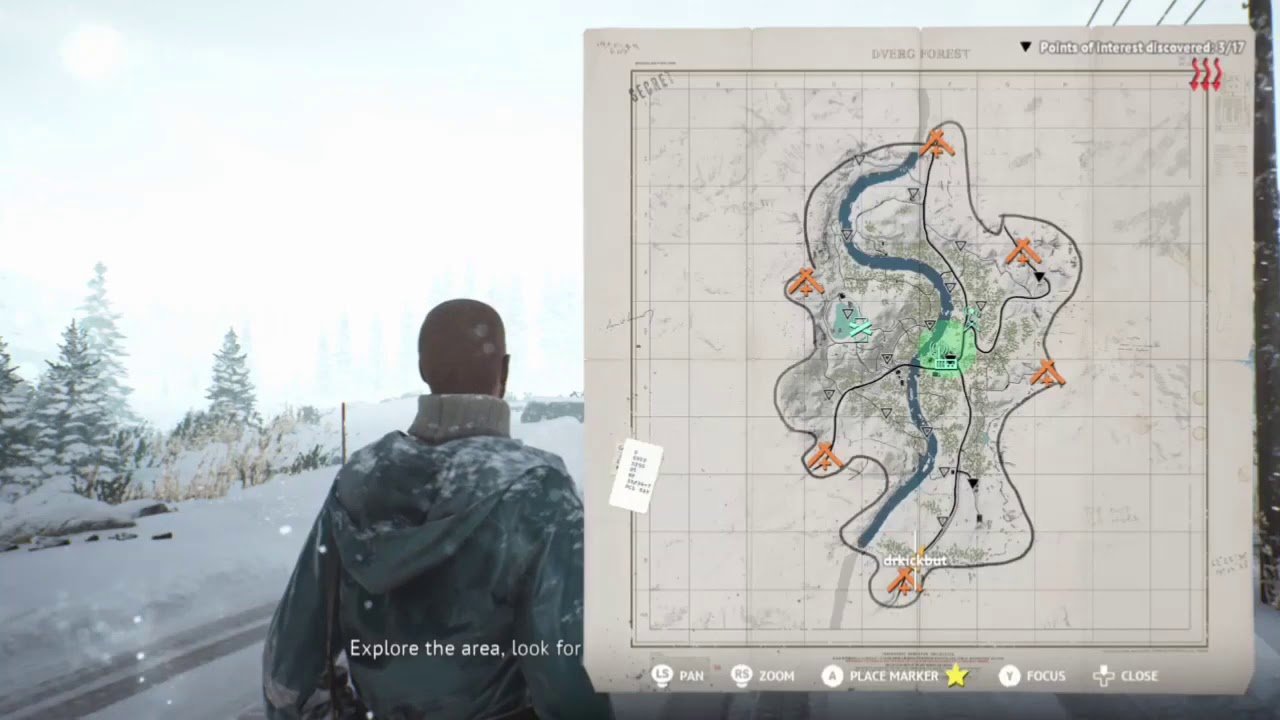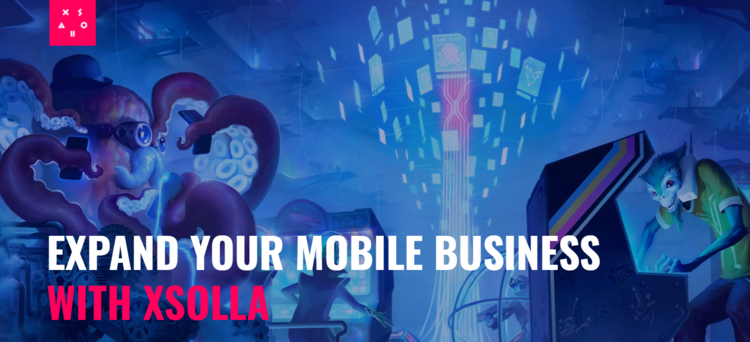What Comes After Battle Royale and Why You Need to Know Vigor
This post is sponsored by Xsolla. If you’re interested in growing your business on mobile and beyond, look no further. Xsolla has dedicated tools that will help you create your own online commerce platform, improve your performance marketing and discoverability, and expand your game business on mobile and PC. Check out Xsolla’s solutions for more information.
Deconstruction by Anton Datiy, Games marketing & publishing specialist
I think it’s safe to say that the battle royale gold rush is over. The winners are decided, both on PC/Consoles (Warzone, Fortnite, Apex Legends) and on mobile (PUBG Mobile, Free Fire, and Call of Duty). Those who were late to the bandwagon are now looking for the next big wave.
Mobile is a good indicator for the interest towards Battle Royale games. Downloads for Battle Royale titles have decreased significantly on mobile. Partly this is due to Fortnite being banished. But one would assume players would have instalelled a subsitute game in bigger numbers.
Nearly all major studios from NetEase to Tencent and Ubisoft are betting on survival-oriented extraction shooters as the next big thing on all platforms. These shooter games put players against each other in a shrinking circle. ‘Go in, loot, fight players and/or AIs, survive and extract’ is the formula pioneered by DayZ, and later honed by Escape From Tarkov, which gets the heart pumping even after thousands of play sessions.
The reason why extraction shooters have not had a breakout moment is due to the very hardcore nature of these games that relies on extremely punishing survival systems. For example, Escape from Tarkov has gone full-military with its detailed limb injury mechanics, complicated inventory management, and ultra-realistic gunplay. On the other hand, DayZ lacks proper live service support, forbids players from ‘extracting’ and saving loot outside the game session, and does not have a time-constrained session which leads to some players wandering for hours only to die and lose everything without any feeling of achievement.
But even though the gameplay is very punishing in extraction shooters, maybe an even more impactful element that is holding these games from mainstream success is that they are limited to PC and offer mainly paid versions. As most of you readers know, there’s no better way to drive an audience base than going free-to-play.
In short, extraction shooters are prime for some ‘fortniting’ (which, of course, includes a console release) to open the highly engaging and unique but inherently hardcore niche up for mainstream players, especially on consoles.
Deadside is one of those niche extraction shooters that has a rabid small fan base.
Some teams have already attempted to do that — notably Warzone’s Plunder mode, The Cycle, and Scavengers — but these attempts are far from the genre-defying success. The next contender to the throne is Battlefield 2042, with its Hazard Zone mode rumored to take notes directly from Tarkov’s harsh PvPvE loot-survive-extract structure.
Yet to understand the potential of the new wave of extraction shooters entering the market, it is important to analyze Vigor. In August 2018, Bohemia Interactive — creators of ARMA and DayZ — launched Vigor into early access on Xbox. Since then the game has been launched both on Switch and Playstation. There are no plans as of yet to bring the game onto mobile or PC.
Vigor has flown under most radars. But 3 years, 10 million registered players across PlayStation/Xbox, and 10 seasons later, it’s still growing within its niche. The game has also made its way into top downloads charts for F2P games on Playstation Store several times (for example, made it to the top 5 across US and EU regions in January 2021), which indicates organic interest spikes and/or effective marketing campaigns.
THE GAME
So, what exactly is Vigor? It’s a free-to-play third-person online PvP shooter set in the post-nuclear war Norway of the present day. You play as an Outlander who is trying to survive, while slowly rebuilding your shelter in the middle of the serene mountain valley and sneaking out for supply runs called Encounters.
Encounters are 10–15 minute sessions set on several maps across Norwegian forests, desolate villages, and snowy ravines. You spawn at the random edge of a map with a mission to explore, loot resources/food/equipment, fight or avoid other players (8–16 per lobby), hunt for the airdrops, and eventually extract at one of the Exit Areas before the location is covered with a radioactive cloud, killing everyone on the map. If you die, you lose all the loot, unless you’ve purchased insurance.
Gathered resources are used for crafting and shelter level-ups. You begin the game with a rusty, war-torn house that is slowly turning into a much more pleasant building with every level. Shelter upgrades also affect gameplay. For example, a water distillation system speeds up other upgrades, while garden beds provide food that can be exchanged for loot boxes.
As you progress through the game, your stash gradually grows with better weapons and gadgets you craft and extract that can be taken to future Encounters. Crafting is done at your shelter — you gather scrap during matches and turn it into weapons, ammo, or things like radio scramblers or traps. Better equipment requires either much more resources or more aggressive (risky) looting.
This is the starting point. My shelter needs a Property Brothers badly…
After risking my life in numerous Encounters I’ve finally built something I can call a home…
On the high level, Vigor shares a lot of similarities with the touted streamer hit, Escape from Tarkov. But some key differences between the two.
Vigor is console-only, while Escape from Tarkov is a PC-exclusive (although BattleState Games has announced plans for a console release).
Vigor is a free-to-play title, unlike Tarkov.
It’s much more accessible in terms of player onboarding, UI, inventory management, and controls.
Bohemia’s title is more forgiving than Escape from Tarkov. There’s no reliance on overly realistic, gameplay-affecting survival mechanics like limb injuries, hunger, or thirst.
It also doesn’t have AI bots that are often an even bigger pain in the neck than hostile players in Tarkov. As a result, Vigor players can choose not to engage in intense direct player-versus-player combat and simply evacuate alive with some basic loot on their hands three minutes into the game.
Nevertheless, player-versus-player combat is rarely avoidable if you’re aiming for better loot. High-value stashes and airdrops are marked on the map for everyone to see, which causes the most aggressive players to make their way to those locations turning the game quickly into a much more nerve-racking experience.
This is especially true for solo players, as team play allows for more coordinated location scouting. And just like in DayZ or Tarkov, stakes feel higher than in Battle Royale games. This is due to the fact the precious loot you lose upon death is gone forever, stolen by that sneaky sniper from the woods (unless the player buys consumable insurance with a microtransaction…).
In Vigor players spawn in different corners of the map making their way to the most prized loot in the middle.
The most rewarding loot can be obtained from three sources marked on the map for everyone in the lobby — unlockable safes protected barred houses and airdrops. Airdrops are by far the best, and the way they work differs from battle royales as well.
The airdrop contains rewards that are useful outside of the main game session. To capture the content of the airdrop, it has to be safely delivered to an extraction point. The content of an airdrop is a loot box that the player can open after extracting from the level. The wider area of possible airdrop location is displayed from the beginning of a match to all players, but a player can change it to somewhere closer to your position if your team finds a communication transmitter in the level.
There are several transmitters across the map that can either relocate the drop area, improve its contents or accelerate crate opening. This turns the transmitter into an attractive target for the first half of the match. If your team wants to get the airdrop, you first have to get the transmitter to prevent other players from changing their drop location. And of course, having control of a drop location opens up an opportunity for an ambush.
Extracting with the airdrop grants players high-value rewards — XP for shelter upgrade, crafting resources, consumable items like medkits, and loot boxes containing permanent crafting blueprints and cosmetic items. But be wary. As soon as you pick up the airdrop, your location will be revealed to other Outlanders.
By the time you grab a hold of the airdrop, someone has probably already obtained a signal disruptor (preventing you from seeing icons on the map), a mortar strike designator, a decoy that can create light glares similar to a sniper optics, a military-grade weapon or anything else to make your extraction harder. Have fun.
The most important thing with Vigor is that it manages to maintain a balance between punishing survival of hardcore extraction shooters leading to a bit more accessible player experience. And the game has active live services with quarterly season updates unlike in rival paid titles such as The Cycle or Scavengers.
If you’ve wanted to feel the ‘Tarkov thrill’ without obliging yourself with studying 50-page guides or expecting to die from a single bullet 30 seconds into the match, Vigor could be the right game for you.
THE BUSINESS
In terms of monetization, the game is a pretty straightforward package with a 50-tier Battle Pass and a cosmetic shop using Crowns as a hard currency. Free battle pass tiers contain weapons and in-game items like medkits while the premium ones provide mostly skins and experience boosters.
Vigor offers a quarterly battle pass as the main engagement and monetization driver. Yet 10 seasons in the skins are still staying true to the setting. Realistic, gritty and just not very appealing.
What’s cool is that you can not only level up the current pass but also pick one of the older passes to farm alongside it. This might not be the best monetization tactic but it is a nice way to battle FOMO (Halo Infinite will soon do a similar thing with its battle pass system) and allow players who’ve missed a season or two to catch up without feeling left behind. In that regard, it seems like Bohemia does not want to create a highly grindy experience that requires constant time investments.
The main problem with the Battle Pass is that — in my opinion — the cosmetics are not worth the hefty ~$20 price tag. Vigor, albeit having a really nice environmental art style, lacks character and weapon design. Apart from some rare cool outfits like a hazmat suit, your Outlander is free to choose from a vast selection of equally generic hats, coats, and ushankas. I assume this fits the setting but certainly limits customization opportunities. We’ll see what the studio will do with this approach moving forward.
Another feature that will surely break the monetization, is the ability for players to generate hard currency. Build an antenna at your shelter, and you will get some Crowns every day, with the amount growing at each new antenna level. In the endgame, a fully-upgraded antenna can provide you with almost enough cash to cover the premium pass — though you will need to invest heavily in its upgrades, and limited-capacity storage requires you to log in and extract Crowns regularly.
The more I played, the more I began to think that the Battle Pass was not the main revenue driver for Vigor. The main conversion and repeat purchase system in the game is the insurance mechanic. A player can secure their team’s loot for one Encounter, and it costs 60 Crowns (a $19.99 currency bundle amounts to 935 Crowns and 15 insurances). If you’re playing seriously and plan to snatch at least some good stuff from your expedition, insurance becomes a must-have.
THE CHALLENGE
I really enjoy playing Vigor, but I think it has some significant issues preventing the game from reaching a tipping point — and I do believe that addressing them can help Bohemia establish a successful, long-lasting live service product:
Clunky gunplay, especially in ADS (aim down sight). There’s no other way to put it — shooting while aiming down sights in Vigor is not very good. Clunky controls (you can only switch-tap between third-person view and aim down sights, not being able to hold-to-aim and staying in first-person perspective, PUBG-style) and chaotic recoil make every mid/long range shootout more of a you-vs-your-gun instead of you-vs-your-enemy. This triggers heavy DayZ PTSD, which the gunplay in Vigor is most certainly based upon, can be a dealbreaker for some players.
Netcode & tech issues. Technical issues have marred the game ever since the Early Access launch, and from what I’ve seen by comparing current and EA versions of the game, things got way better. Still, players are regularly reporting issues with matchmaking, server stability and in-game bugs, and I’ve faced some of these problems myself — for example, not being able to form a party via in-game invite menu. They are not game-breaking but still need work.
Battle Pass content. As stated before, even with an ability to generate hard currency, the quality, variety and quantity of content for a 50-tier premium BP doesn’t match its hefty price tag.
Endgame progression. Currently, there’s nothing to do after you max out your shelter and collect all available crafting blueprints — it still amounts to 100+ hours of gameplay, but after that it‘s all just about farming battle passes. Some sort of additional account-wide meta, ranked playlists, or even bigger maps with AI enemies or Tarkov-style faction quests feel like a good addition for maintaining long-term retention.
Console exclusivity. An idea of going live only on consoles seemed fitting in 2018, but it’s clear there’s untapped potential on PC. Vigor could cannibalize some percentage of Bohemia’s own DayZ audience, but an opportunity to reach Escape From Tarkov players should certainly outweigh this.
I played Vigor in 2018 when it was in a very rough condition. Since then, Bohemia has come a long way, and I’m glad I gave the game a second chance. The studio is working hard, and it’s paying off — slowly, but steadily. I hope that someday Vigor will have a ‘Tarkov moment’, with some tier-1 streamer igniting the word-of-mouth viral craze. This will, of course, happen only in case Bohemia fixes the issues that prevent Vigor from reaching new heights.
With Xsolla you can easily launch your own cross-platform player account system Let your players stay connected and engaged no matter which platform they play on. The money you save on platform fees will go directly into further improving and growing your games.











